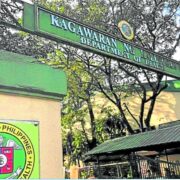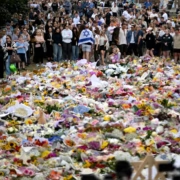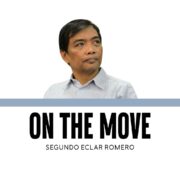Make Intramuros a living history museum

The entire walled city of Intramuros has huge potentials of becoming a showcase of our cultural heritage, a key educational platform, and a premier tourist destination. For these potentials to be realized, the historic area should be turned into a living history museum.
I attended a cousin’s wedding at San Agustin church inside Intramuros last Saturday, and it gave me a chance to revisit the walled city. The visit made me reminisce my student days at the College of William and Mary in Virginia, United States of America. Founded in 1693 and named after the British reigning monarchs, the school is the second oldest university in the US, and it counts among its alumni many of the founding fathers of the US, including George Washington and Thomas Jefferson. The school is situated in, and forms an integral part, of Colonial Williamsburg which was the capital of Virginia when the US was still a British colony.
The historic area of Colonial Williamsburg is touted as the world’s largest living history museum. It recreates the atmosphere and lifestyle of the 1700s. Within a 122-hectare area, there are 89 restored 18th-century buildings and several hundred structures that were reconstructed or recreated in keeping with colonial-era designs. The structures include the Governor’s Palace, Capitol, court house, prison, military camp, hospital, church, inns, and family homes of the colonial period. There are also taverns which serve food and drinks of the era, a market square where commodities and products of the period are sold, and a playhouse where 18th-century entertainments are staged or exhibited. There are craftsmen like carpenters, tailors, shoemakers, wigmakers, blacksmiths, and silversmiths, who produce colonial-era crafts both for sale and for show. The people working as part of the historic area walk around the streets, do their chores, and conduct their trades, while clothed in 18th century attires, and many of them are trained to speak in archaic English.
At the Colonial Williamsburg Capitol building, I’ve watched a show recreating a raucous session of colonial legislators, with American patriot Patrick Henry delivering a fiery speech against Britain. I’ve seen actors performing as George Washington or Thomas Jefferson conversing with the crowd. I saw a slave auction in the market square, which became a huge controversy at that time. I tried rabbit stew and drank ale in one of the taverns.
Intramuros should be transformed into something similar to Colonial Williamsburg. For starters, the abominable golf course that occupies a huge space outside the walls must go. The golf course is a horrendous symbol which tauntingly proclaims that Intramuros is an enclave of the rich. So few people benefit from the huge space occupied by the golf course. It’s a complete waste of precious space in the heart of our nation’s capital. The spiel that the golf course is a facility that gives common people an opportunity to play golf, is ridiculous and insulting. Even if the golf course has had a long history dating back to more than 100 years, it’s the kind of history that should be rightfully discontinued. The area should be instead transformed into something like the El Retiro park or the botanical garden of Madrid, Spain, where common people can stroll, jog, picnic, and play games amidst a rich variety of trees and ornamental plants. The golf course space will go a long way in expanding the very limited grounds of the Luneta Park, by providing more space for ordinary people to congregate and enjoy outdoor activities.
There are existing structures inside Intramuros that can be restored to their 19th-century grandeur. Colonial-era homes and business establishments can be reconstructed in vacant lots. Life during our Spanish colonial period can be recreated. Performers can be garbed in 19th-century clothing, and they can stroll around, do their daily routine, or engage in their crafts or profession. The current sight of Intramuros guards garbed in Rayadillo uniforms is already such an interesting spectacle. Imagine if Intramuros teems with people dressed in the attire of the rich, middle class, and ordinary people of the 1800s. Heritage cuisines can be served in restaurants, cafeterias, and panciterias. Street food peddled by itinerant vendors can be sold outdoors. Filipino craftsmen can ply their trades both for show and for the sale of their products. Parades, musical concerts, and theater shows can be performed during weekends. Intramuros can be a cultural Disneyland that showcases history and heritage. If the Marcos administration is looking for a cultural legacy, this is the right project.
Colonial Williamsburg proclaims its mission with these words: “That the future may learn from the past.” We need to transform Intramuros into a living history museum because we are a people in dire need of making our future learn from our past.
—————-Comments to fleamarketofideas@gmail.com

















